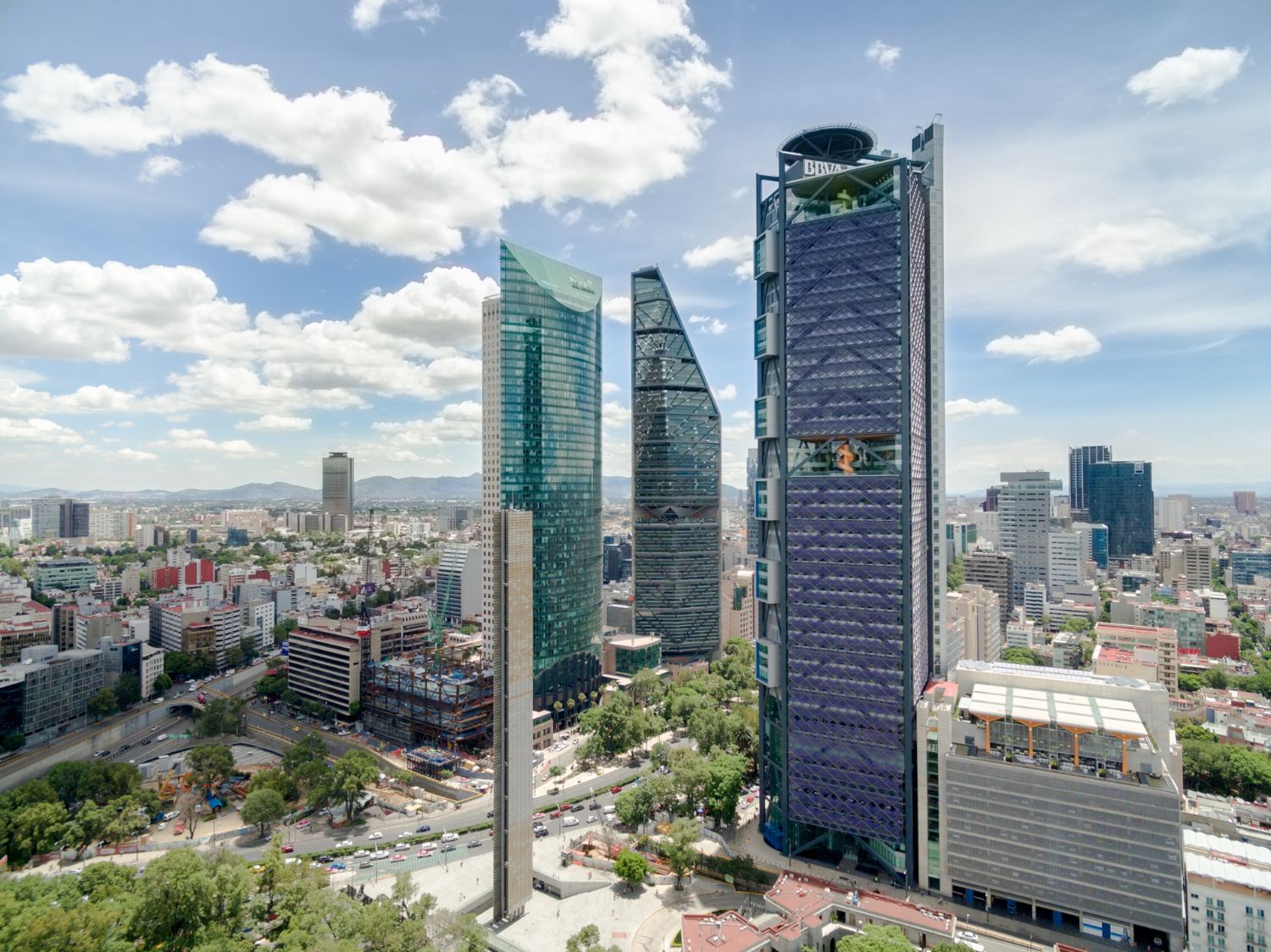In the digital age, smart buildings are becoming the norm in the construction industry, transforming the way we live and work in urban environments. In this blog, we will explore in depth what smart buildings are, their characteristics, innovative technologies, uses, advantages and disadvantages. In addition, we will highlight concrete examples of smart buildings in vibrant Mexico City.
¿What are Smart Buildings?
Smart buildings are structures equipped with advanced technology that optimizes operational efficiency and enhances the user experience. These buildings integrate automation, control and monitoring systems that enable efficient management of resources such as energy, water and security.
Characteristics of Smart Buildings:
1 Automation:
Automated systems control lighting, climate control, security and other operational aspects, adapting to the changing needs of the environment and occupants.
2 Connectivity:
The interconnection of devices and sensors allows data to be collected and analyzed in real time, optimizing performance and facilitating informed decision making.
3 Energy Efficiency:
The integration of renewable energy technologies, together with intelligent demand-side management, reduces energy consumption and operating costs, contributing to environmental sustainability.
4 User Experience:
Smart buildings offer a personalized experience to occupants, from environmental settings to additional services such as space reservations and utility management.
Key Technologies in Smart Buildings:
1 Internet of Things (IoT):
Connecting devices and sensors via the Internet allows data to be collected and systems to be controlled remotely, improving efficiency and convenience.
2 Artificial Intelligence (AI):
AI algorithms optimize the operation of systems, anticipating usage patterns and making automatic adjustments to maximize efficiency and safety.
3 Building Management Systems (BMS):
BMSs integrate and oversee all building systems, providing a centralized platform for monitoring and control.
Advantages and Disadvantages of Smart Buildings:
Advantages:
- Increased operational efficiency and cost reduction.
- Improved quality of life and occupant productivity.
- Reduced environmental impact and compliance with sustainability regulations.
- Increased security and access control.
Disadvantages:
- High initial implementation costs.
- Dependence on technology and risks associated with cyber-attacks.
- Possible privacy and data protection issues.
Examples of Smart Buildings in Mexico City:
Torre Reforma: This emblematic skyscraper has intelligent HVAC, lighting and energy management systems, in addition to a bioclimatic design that optimizes ventilation and natural lighting.
BBVA Bancomer Tower: As one of the most modern buildings in the city, the BBVA Bancomer Tower incorporates cutting-edge technologies for energy efficiency, safety and comfort for its occupants.
Parque Toreo: This commercial and office complex stands out for its focus on sustainability and technological innovation, with intelligent waste management systems, LED lighting and access control.

At Alamex, we are committed to building a smarter, more sustainable future through innovative solutions that transform the way we interact with the built environment. If you are interested in learning more about our projects and services in the field of intelligent buildings, do not hesitate to contact us. Together, we can drive change towards a more connected and efficient world.